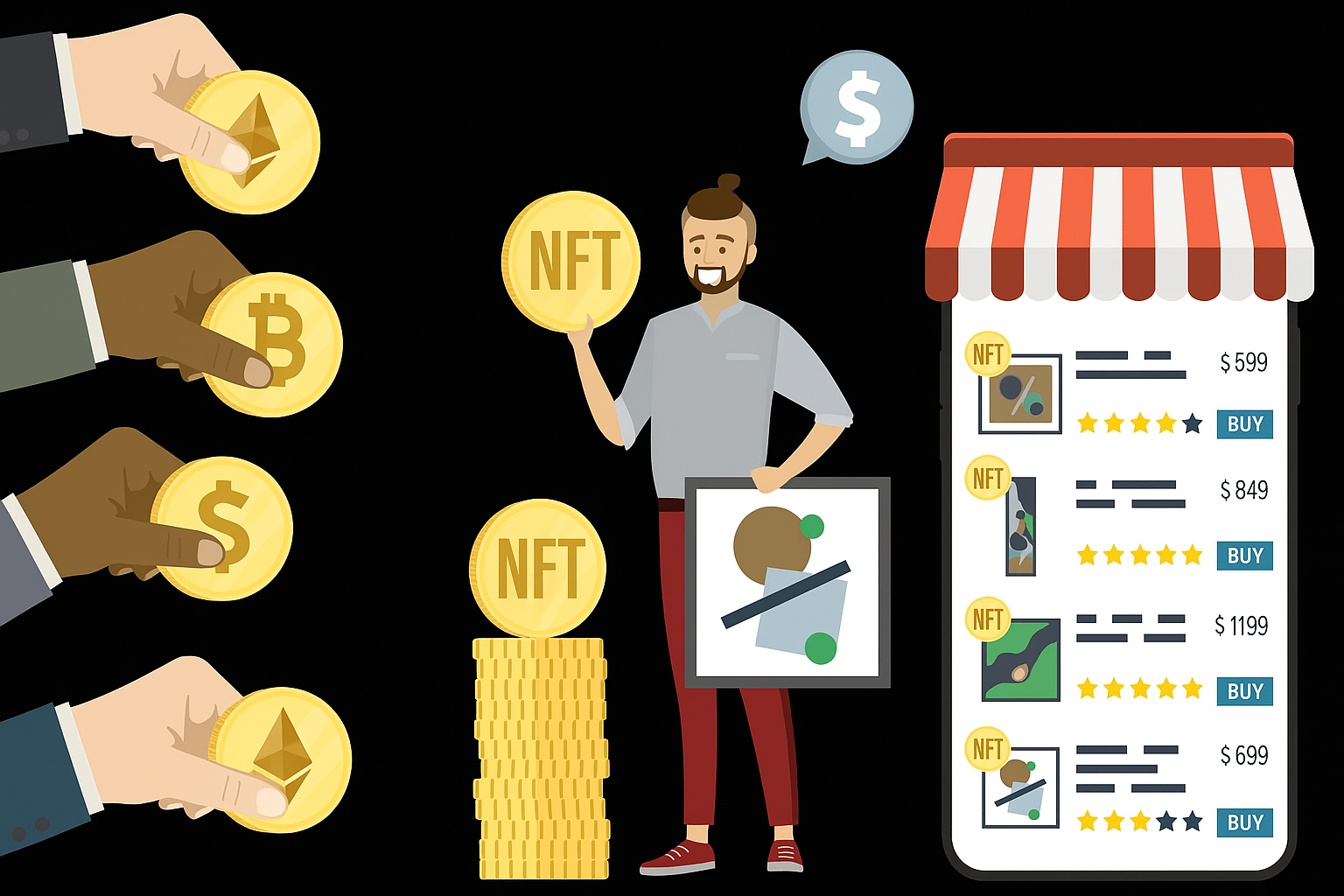What Is Actually an NFT?
List of The NFT Marketplace
1. OpenSea
2. Rarible
3. Larva Lab
4. Magic Eden
5. Axie Infinity
6. Nifty Gateway
7. KnownOrigin
8. SuperRare
9. Foundation
10. Mintable
11. Decentraland
12. Enjin Marketplace
How To Create an NFT?
So which one is the Best NFT Marketplace?
Along with the increasing popularity of NFTs, the number of NFT platforms and NFT marketplaces has sprung up. There are plenty of NFT marketplaces that can be your options to sell or buy NFT arts, from the most famous OpenSea to the independent and community-based like Hic Et Nunc. In addition, there are several NFT platforms and marketplaces on alternative blockchains currently, for example, Solana and Polygon NFT marketplace. Now let’s take a look at a list of NFT marketplaces where you can consider buying or selling NFTs.
What Is Actually an NFT?
NFT, or non-fungible token is a tokenized digital asset that belongs only to you. An NFT was created to make it easier for digital artists to assert the originality of their work. An NFT platform or NFT marketplace is a place to trade, buy, and sell NFTs.

Not only buying and selling, but sometimes some marketplaces also provide NFT minting services. Before you can access and use the NFT marketplace features, below are the required things that you need before making an NFT transaction:
- Crypto wallet
You must select a wallet compatible with the NFT-enabled blockchain network that you wish to purchase on the marketplace of your choice. For example, if you plan to buy or sell NFTs via an Ethereum-based blockchain platform, you should use an Ethereum-compatible wallet like MetaMask.
- An amount of any cryptocurrency
You need to deposit your wallet with a certain amount of crypto before deciding to buy or minting NFTs. In addition, you need to find out what kind of cryptocurrencies are supported by the marketplace of your choice.
- User account
You need to create an account on the specific marketplace to buy or sell your NFTs. However, in most NFT marketplaces, registering and creating NFTs on the platform requires a blockchain network fee. The fees vary depending on which blockchain-based system the marketplaces’ using. In addition, choose a trusted and safe NFT marketplace to make NFT buying and selling transactions.
List of The NFT Marketplace
Here is the list of the best NFT marketplaces you can find online. Let’s find out!
1. OpenSea
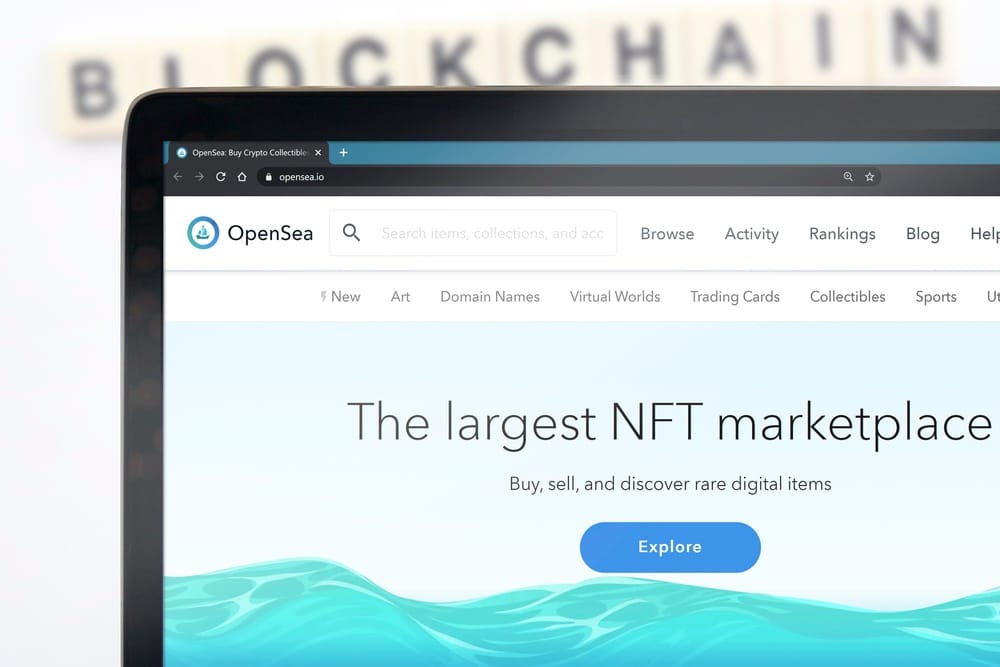
The OpenSea platform is the world’s first and largest peer-to-peer NFT marketplace. Through OpenSea, you can find NFT games, music, and other works of art. What’s interesting about OpenSea is the fact that the platform includes ERC-1155 and ERC-721 tokens.
The mining tool in OpenSea is also one of its main advantages as an NFT marketplace. This mining tool can help content creators and illustrators to develop their items and create their own NFT collections.
OpenSea is the perfect platform for art creators to develop smart contracts of their own for games or digital collections.
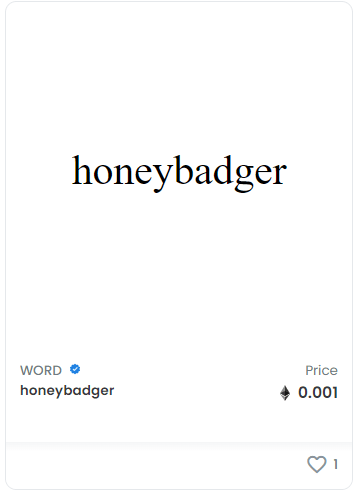
One of the NFT seller accounts at OpenSea, Word, sells an image containing a random word or sentence created as an NFT. Are you interested in buying this NFT?
Commission and gas fee on OpeanSea:
The commission on OpeanSea Marketplace is 2.5% for all transactions. The creators can choose to set their commission range up to 10%.
The gas fee on OpeanSea when using Ethereum fluctuates based on demand and other variables, so we can’t put a definite number to it. Anyhow, here is a quick summary of OpeanSea’s gas fee structure:
- To set up an account, first time sellers have to make a one time payment of gas fee.
- Buyers will have to pay gas fee when a fixed price item has to be purchased.
- Sellers will have to pay the gas fee when they accept an offer.
- The gas fee for auction listing is covered by OpenSea.
Here are the pros and cons of OpenSea marketplace:
Pros:
- The NFT mining tool in OpenSea is also one of its main advantages as an NFT marketplace. This mining tool is easy to use and can help content creators and illustrators to develop their items and create their own NFT collections hassle-free.
- Creators can even develop smart contracts of their own for games or digital collections.
- They also provide a variety of digital currency, making it one of the largest NFT marketplaces. The low platform costs are also a great way for you to make more money:
Cons:
- Cryptocurrency is the only mode of payment at OpenSea. The platform does not have any fiat support, hence one cannot make payments with currencies like Euros and USD.
Is OpeanSea a safe place to keep your NFTs?
A big YES! In fact, OpeanSea is the most trusted NFT marketplace out there as of 2022. OpenSea actively works towards fixing security loopholes that could otherwise be leveraged by hackers. So, rest assured, the probability of your NFT facing any threat on OpeanSea is quite grim.
2. Rarible
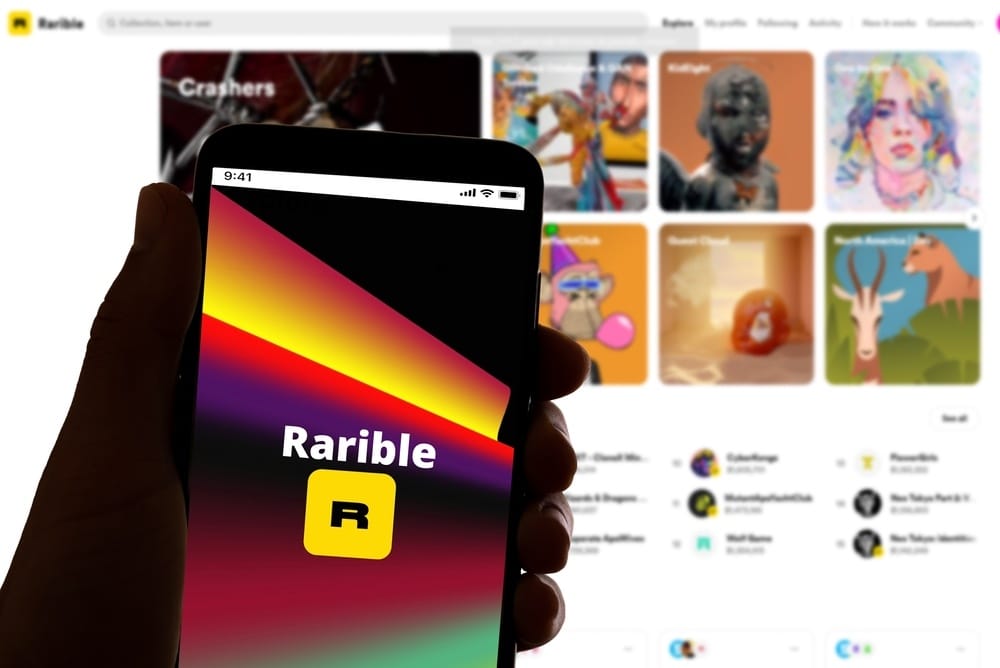
One of the biggest NFT marketplaces on Ethereum, Rarible, is a community-owned platform that showcases various digital artworks and collectible items.
Like OpenSea, you can buy and sell all kinds of artwork displayed on the marketplace. Sellers can also create more than one NFT for artwork and sell it more than once. Rarible’s interface is quite simple and easy to use by novice users of the NFT marketplace. Users who have tried to make transactions through a similar NFT marketplace like OpenSea will also find it easy to learn.
How to buy and sell NFTs through Rarible can use various crypto wallets, such as MetaMask, Coinbase Wallet, MyEtherWallet, or any mobile wallet that uses WalletConnect.
Commission and gas fee on Rarible:
Similar to OpenSea, Rarible charges a 2.5% commission on every transaction, and the creator gets a royalty of 5-10%.
Again, gas fees change according to demand and supply. You’ll have to be on the lookout for a time when the fee is low.
Here are the pros and cons of Rarible marketplace:
Pro:
- Rarible’s interface is quite simple and easy to use by novice users of the NFT marketplace. Users who have tried to make transactions through a similar NFT marketplace like OpenSea will also find it easy to learn.
- This marketplace is beginner-friendly, without technical knowledge or coding required.
Cons:
- Customer Support is not as responsive as other platforms .
- It has a relatively high gas fee, so this marketplace may not be for you if you don’t mean business and just are a casual passerby.
Is Rarible a safe place to keep your NFTs?
Yes, Rarible is absolutely safe for keeping NFTs. Its limited customer support might give this place some minus points. However, that’s a cause of concern only if the worst tends to happen. Hopefully, they should up their game with better customer support in the coming years.
3. Larva Lab
Another example of a currently popular NFTs on the Ethereum network is CryptoPunks. CryptoPunks are 10,000 randomly generated characters created in pixel art with unique attributes. While initially, CryptoPunks were available for free. Nowadays, the only way you can own them is to buy them. The high popularity of CryptoPunks causes the price to become even more fantastic. Currently, to buy one CryptoPunk NFT at the lowest price, you have to spend 94.99 ETH.
To own the CryptoPunks collection, you have to buy it through the Larva Labs marketplace. Larva Labs is a mobile software company that makes NFT collections such as CryptoPunks and Meebits.
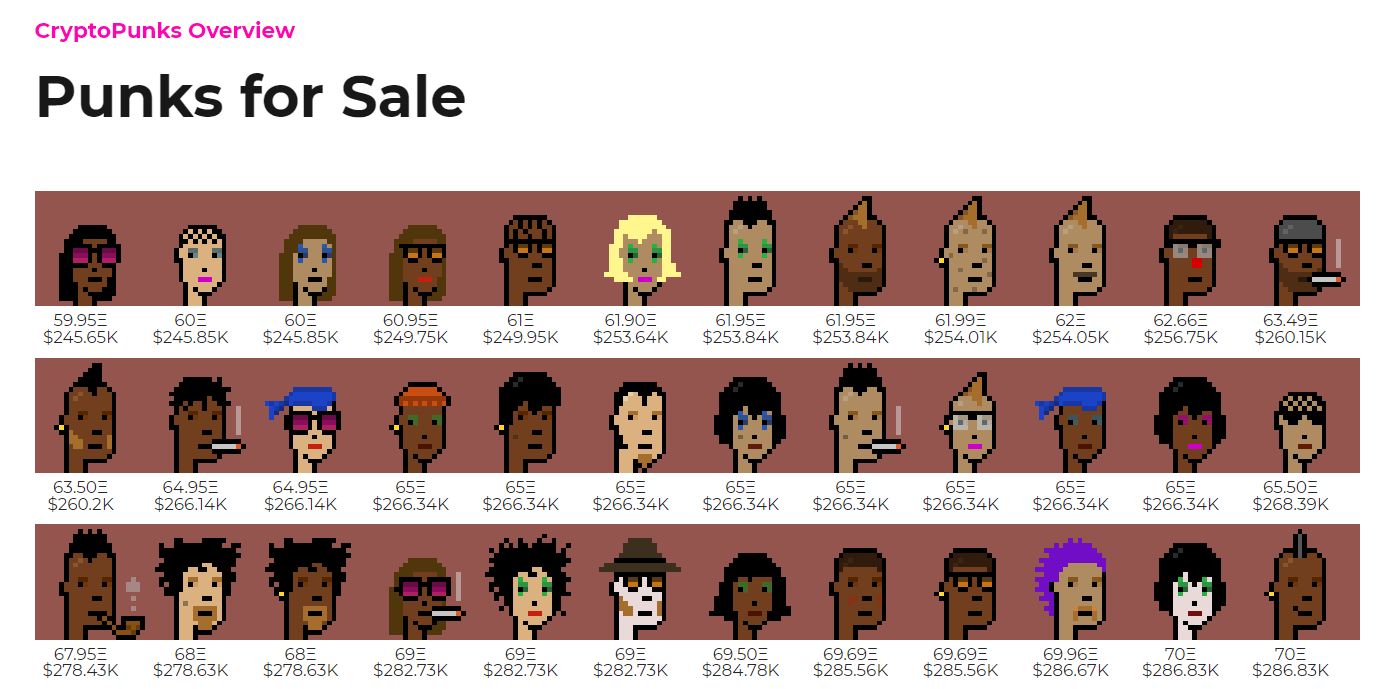
To buy NFT CryptoPunks, you just need to connect your MetaMask wallet. Then search through the list of available Punks (the ones with a red background are for sale) and enter your bid.
Commission fees on Larva Labs:
Currently, as of 24 February, 2022, The Larva Labs website has not mentioned anything about the commission fee on Cryptopunk transactions.
Here are the pros and cons of Larva Labs marketplace:
Pros:
- There is a high return on investment on the more unique and rare punk portraits.
- The platform is very transparent with the details of the portrait and the verification of its authenticity.
Cons:
- As it uses Ethereum, the fee here is quite high, and it doesn’t support other modes of payments like Paypal and credit cards.
- The supply of Cryptopunk is limited to 10,000 only.
Is Larva Lab a safe place to keep your NFTs?
At present (Feb 2022), the Larva Lab creators are getting flack for the way they dealt with the smart contract loophole that their v1 collection had. This has significantly lowered investors’ confidence in Cryptopunks. The safety of your NFT seems questionable at Larva Labs, but it could improve in the coming days.
4. Magic Eden
Magic Eden is a decentralized application (dApp) platform with digital collectibles, gaming assets, and much more functions. It is known as one of the best Solana NFT marketplaces.
Commission fees on Magic Eden
Magic Eden charges 2% of all transactions on the platform.
Here are the pros and cons of the Magic Eden marketplace:
Pros:
- Magic Eden marketplace is a user-friendly platform with a convenient design.
- NFT listing can be accessed for both beginners and professional NFT creators via Magic Eden launchpad.
- Creators are allowed to have full power and control over their work with low transaction fees.
Con:
- As an open platform, it is common to see several plagiaristic and repeated content.
- It does not offer any other supported chains outside of the Solana blockchain.
5. Axie Infinity
Axie Infinity is the second-latest, which is indeed a big fleet for this platform. Axies are unique digital creatures that look similar to Pokemon, who love to battle. Users on the platform can use Axies to purchase and sell NFTs on the Axie Marketplace.
Commission fees on Axie Infinity:
Axie takes a 4.25% cut on all Axie transactions and also charges a fee for breeding.
Here are the pros and cons of Axie Infinity marketplace:
Pros:
- Axie Infinity’s NFTs have a lot of utilities. They can be used during combats in the game, and the tokens earned lets users breed new Axies. A player can profit from that by selling their Axies on the Axie NFT Marketplace.
- It provides huge money-making opportunities for full-time gamers and those looking to become one.
- It is beginner-friendly so anyone can learn how to use Axie Marketplace with minimal effort.
Cons:
- Axie Infinity by no means is an easy platform to navigate if you are a first-timer. Its interface takes some time for people to wrap their heads around. That can be one of the reasons why the platform loses its audience.
- Not only will you need to set up an Ethereum wallet but also a Ronin wallet where you’ll have to deposit ETH to Ronin. Then purchase a minimum of three Axies, all of which cost more money and time when compared to other marketplaces. That being said, it is worth the hassle for full-time professionals.
Is Axie Infinity a safe place to keep your NFTs?
There haven’t been any red flags in this marketplace concerning safety issues so far. So, yes, you can keep your NFTs here without worrying.
6. Nifty Gateway
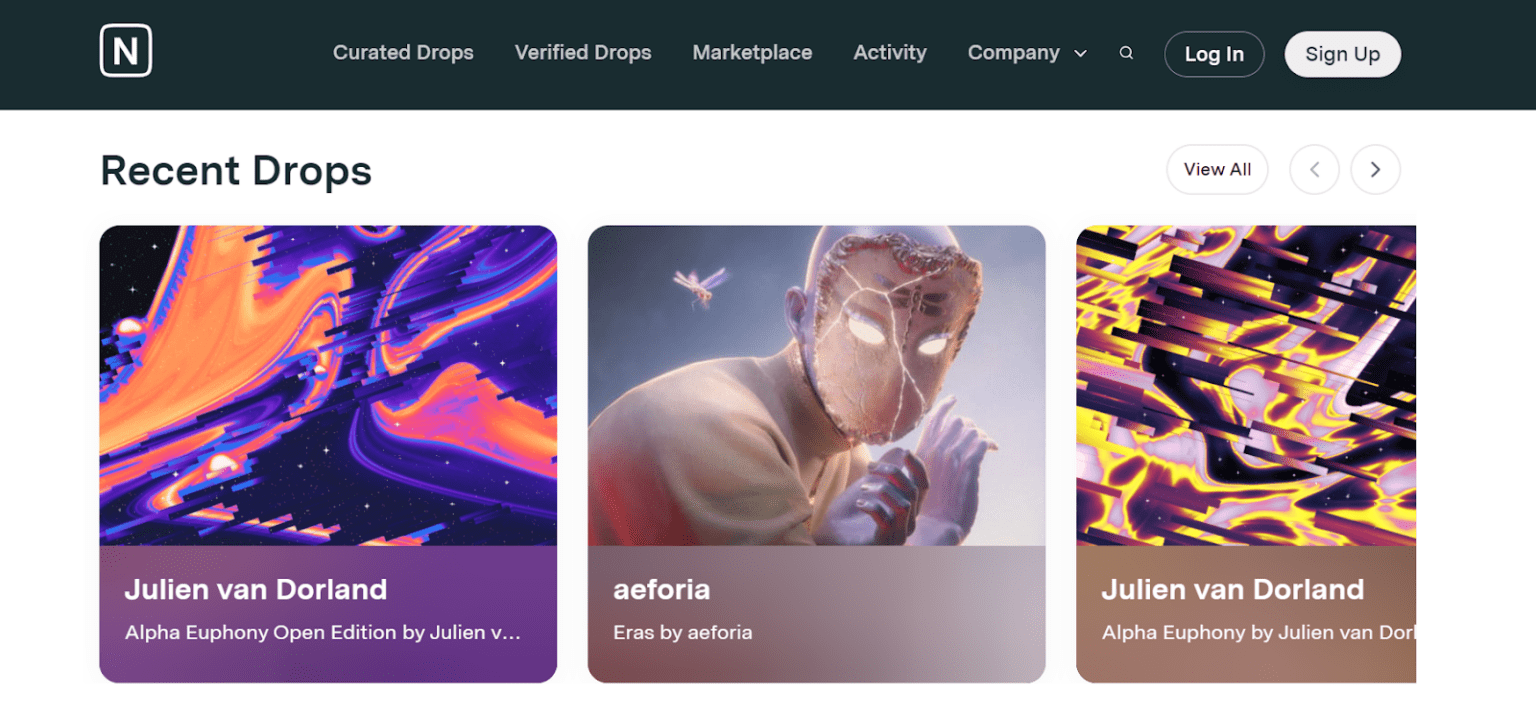
Nifty Gateway is a trusted high-end NFT marketplace for buying and selling crypto arts. One of the reasons behind the high popularity of Nifty Gateway is the collaboration it takes with top content creators, big brands, athletes, and artists.
While purchasing and selling NFTs on Nifty Gateway is safe, it should be noted that Nifty is a custodial NFT marketplace. Meaning the NFTs are not stored in your wallet but on the platform. You don’t need to connect your crypto wallet like OpenSea.
Commission fees on Nifty Gateway:
The commission fee is 15% on this platform, with 5% being the service fee and the remaining 10% being the artist fee.
Here are the pros and cons of Nifty Gateway marketplace:
Pros:
- Purchasing and selling NFTs on Nifty Gateway is safe even if it is a custodial NFT marketplace. Meaning the NFTs are not stored in your wallet but on the platform. You don’t need to connect your crypto wallet.
- Creators are provided with technical assistance, making it easy for nonprogrammers to navigate and utilize all the facilities.
Cons:
- It lacks affiliate programs. This might repel those who are actively looking for such opportunities.
- For creators to be given access to the platform, a rigorous selection process is established here. It is a far-fetched platform for novice artists.
7. KnownOrigin
KnownOrigin is an NFT Marketplace that’s heaven to mostly the art connoisseurs. It gives prominence to digital art; hence, other forms of NFTs such as exotic avatars and creatures don’t reside in this market.
The all-time trading volume of KnownOrigin is quite low compared to its peers. But, it only makes sense because it provides the most curated, the best-of-the-best artwork – attracting the cream of the society whose taste buds activity for art and art only.
Commission fees on KnownOrigin:
KnownOrigin charges a commission of 3%, with the royalty fee for the artist being 10% on secondary sales.
Here are the pros and cons of KnownOrigin marketplace:
Pros:
- The long vetting process on this platform for one to become a creator here is a good thing in a way. It helps curate fine quality artwork, and one need not search elsewhere to find them.
- Secondary sales commission for creators is 12.5% more than its counterparts like SuperRare.
Cons:
- Getting accepted onto the platform is no easy task. You don’t need to have a huge fan following, but an exceptional portfolio is necessary to gain entry. If you are just getting started, this platform might not be for you.
8. SuperRare
SuperRare prides itself on being a top-end Marketplace. Unlike Rarible, where you are left bewildered with live auctions and all the flashy GIFs, SuperRare’s interface is easy to navigate. Creators’ work will be vetted and only then listed on the platform.
MetaMask or Formatic are the wallets you’ll have to sign up with to access this platform.
Commission fees on SuperRare:
Superare platform charges a commission of 3% to the buyers on primary and secondary sales. The artist gets 10% as royalty.
Here are the pros and cons of SuperRare marketplace:
Pros:
- The platform markets itself as a social network, and it is moderated. So, you can be assured that you won’t be spammed with unrelated content.
- SuperRare is not restrictive in terms of what creators can portray in their work, including nudity.
Cons:
- Fees are comparatively higher. SuperRare commission on the first sale is 15%. Any secondary sale of the artwork would give the creator 10% commission each time their work is transacted.
9. Foundation
Foundation is quite a popular marketplace with popular NFTs being sold on its platform. NFT of Nyan Cat, an internet meme and Aplex Twin’s audiovisual collectable, are a few prominent NFTs that this marketplace proudly showcases in its hall of fame.
Commission fees on Foundation:
This marketplace charges a 5% commission on all transactions.
Here are the pros and cons of Foundation marketplace:
Pros:
- Foundation’s platform is easy to use for both creators and buyers, and the action process here is relatively smooth.
- Searching and browsing digital art here is a breeze compared to most of its counterparts.
Cons:
- As the foundation is an invite-only marketplace, creators need to have an excellent network to get invited. The marketplace might lose out on some great talent because of this restriction.
- The gas and miting cost could add up to over US$40, varying based on the current gas rates. If you are planning to mint a lot of NFTs, resorting to this marketplace could leave a huge dent in your pockets. To top it off, it takes 15% commission on the selling price.
10. Mintable
Mintable, just like OpenSea, is an open marketplace, backed by billionaire Shark Mark Cuban. This platform is perfect for those looking to buy and sell all kinds of NTFs, from photography to music.
Ethereum is the cryptocurrency this platform accepts for transactions. An aspiring NFT collector or creator will need to purchase Ethereum from a crypto exchange first, then connect their wallet to Mintable to facilitate bidding and buying on the marketplace.
Commission fees on Mintable:
Mintable has a varied commission structure based on the nature of NFTs. It charges a 2.5% commission on everyday items, 5% on gasless items and a massive 10% commission on the printable series.
Here are the pros and cons of Mintable marketplace:
Pros:
- Mintable is a cheap option compared to its peers, given it has a gasless minting option.
- Mintable has a huge collection of photography and other forms of art, making it an attractive place for buyers wanting variety.
Cons:
- The quality in this marketplace exists on a continuum, and there is no way to filter the top quality art here. If you are a buyer, it can get difficult in finding the best digital asset.
11. Decentraland
Decentraland is an immersive VR world where digital real estate can be transacted. Its Builder tool enables creators to create fascinating Avatars and personalize unique scenes and architecture. It has a lot of fun events like casino nights, parties and virtual gallery launches lined up in this marketplace.
Commission fees on Decentraland Marketplace:
The commission fee on this platform is 2.5%. It is comparatively less than the fees on most marketplaces.
Here are the pros and cons of Decentraland marketplace:
Pros:
- The platform allows consumers to have a say in the policy revisions and land auctions, providing a free and open market structure.
- It is a highly secure marketplace where the digital assets owned are stored in an Ethereum-based smart contract.
Cons:
- It faces low Liquidity compared to its counterparts as many people are yet to learn how to make the most of the crypto world and digital real estate. Although this is disadvantageous for now, we can’t ignore this marketplace’s growth potential.
12. Enjin Marketplace
We believe you all have heard about Enjin, the platform for game developers that utilize ENJ coin as the native token. Enjin marketplace was designed especially for Enjin-based NFTs. Users are required to use Enjin wallet to list or sell the items on Enjin marketplace. Moreover, users are allowed to trade and collect various types of NFTs such as digital arts, branded crypto collectibles, or gaming items.
Commission fees on Enjin Marketplace:
The commission fee on this platform is a standard 2.5% for every NFT transaction.
Here are the pros and cons of Enjin marketplace:
Pros:
- The platform layout is friendly for the NFT buyer that needs a large number of data points to access a particular NFT, as the layout page provides more information compared to other marketplaces.
Cons:
- The payment method is limited. The platform only relies on ENJ coin. Different payment methods such as fiat money, or Paypal are not accepted.
How To Create an NFT?
The first step in making NFT is to create your artwork. You can create visual works, music, GIFs, or even memes.
Some marketplaces like OpenSea and Rarible provide easy ways to help you create or mint NFTs because these marketplaces have an upload menu with short steps that are easy for users to understand. Especially for the first-timers.
By uploading your artwork on the NFT marketplace, it means that you have created an NFT, and it is ready to be sold.
So which one is the Best NFT Marketplace?
Wouldn’t it be great if we had a definite answer to that question? We say it depends! Your colleague might find a marketplace to be top-notch because of its low fee, but you might prioritize good customer support or quality digital art.
Few marketplaces are unique for the kind of digital assets they curate. For instance, they may be only into art and photography, and few cater to gaming. So it all depends on what you are really looking for.
To conclude, the best NFT marketplace is the one that checks your needs and priorities.
